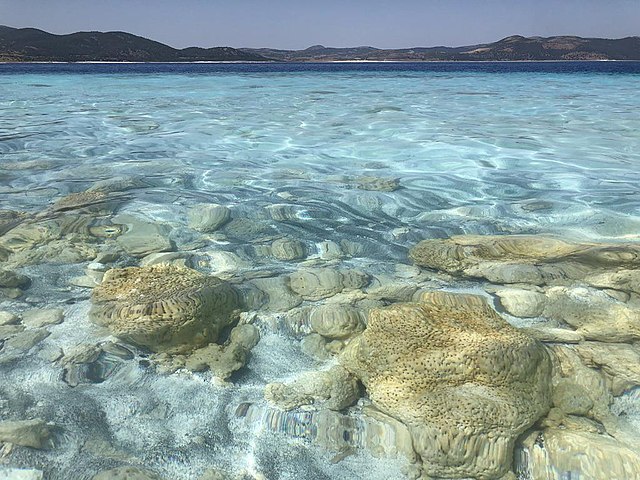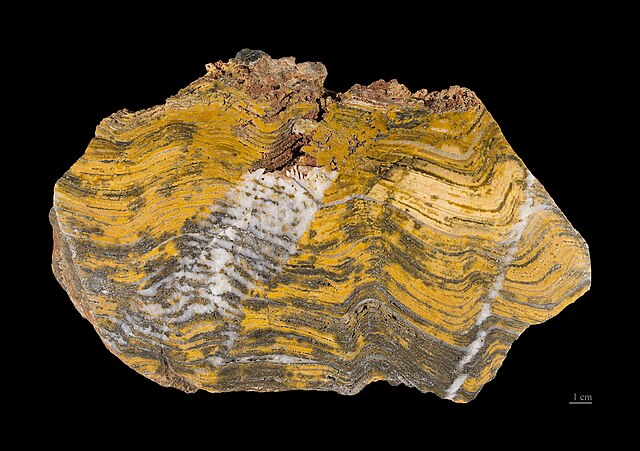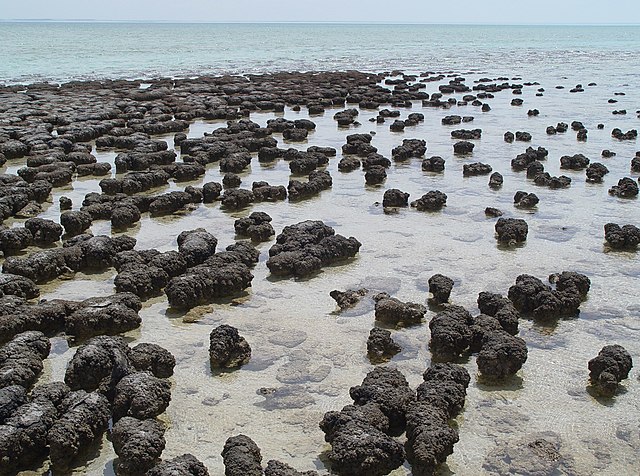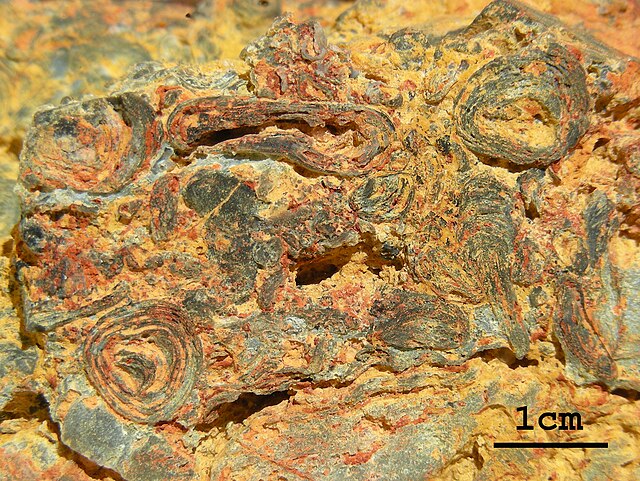Microbialite is a benthic sedimentary deposit made of carbonate mud that is formed with the mediation of microbes. The constituent carbonate mud is a type of automicrite ; therefore, it precipitates in situ instead of being transported and deposited. Being formed in situ, a microbialite can be seen as a type of boundstone where reef builders are microbes, and precipitation of carbonate is biotically induced instead of forming tests, shells or skeletons.
Microbialites in Lake Salda rocks
Emerged microbialite formation at Lake Van, East Anatolia
Stromatolites – laminated microbialites (Precambrian silicified stromatolite, Strelley Pool Chert, (Pilbara Craton), W. Australia)
Stromatolites or stromatoliths are layered sedimentary formations (microbialite) that are created mainly by photosynthetic microorganisms such as cyanobacteria, sulfate-reducing bacteria, and Pseudomonadota. These microorganisms produce adhesive compounds that cement sand and other rocky materials to form mineral "microbial mats". In turn, these mats build up layer by layer, growing gradually over time.
Fossilized stromatolite in Strelley Pool chert, about 3.4 billion years old, from Pilbara Craton, Western Australia
Modern stromatolites in Shark Bay, Western Australia
Paleoproterozoic oncoids from the Franceville Basin, Gabon, Central Africa. Oncoids are unfixed stromatolites ranging in size from a few millimeters to a few centimeters
Fossilized stromatolites, about 425 million years old, in the Soeginina Beds (Paadla Formation, Ludlow, Silurian) near Kübassaare, Estonia






